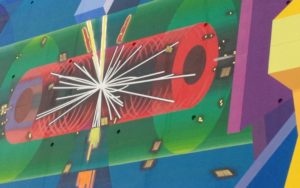RESOURCES
Big Idea: Science

Our future depends on innovation and science drives innovation. Not only do we need more students who are intertested in science, more importantly we need a general population that understands sicnece enough to support policies that will advance research and exploration. Unfortunately, research shows we are failing to keep a majority of students interested in math and science even at the most basic level
To adress the myriad of environmental, health and economic challenges on the horizon we need a generation of scientifically literate students. As parents and educators we must increase engagement, build excitement and help students understand the importance of science.
In this challenge CERN, the European Organization for Nuclear Research, challenges parents, teachers, and students to find innovative ways to make science matter!
ENGAGE
Big Idea: Science
Essential Question: How can we increase interest in, and committment to science and math?
Challenge: Make Science Matter!
Sample Guiding Questions
These are only example questions we encourage you to ask as many personal and contextual questions as possible.
- What is science?
- How do we teach science?
- Why do students lose interest in science?
- How does science connect with other suibject areas?
- What are the qualities of successful science programs?
- How can we make science and math more accessible?
- Etc.
*Once you brainstorm all of the questions organize and prioritize them.
INVESTIGATE
Guiding Activities and Resources
These are only a set of example activities and resources and the learners will need to evaluate the quality of the content. They are not verified or necessarily supported, just examples. The ones that you choose should be in direct relationship to your specific guiding questions and context. Activities and resources for adults, adolescents, and younger children will be different. The goal is to develop solutions that mean something in your community and are sustainable.
Example Activities
- Review the current research on science education.
- Review data from the school and district level to find when students lose interest in science.
- Explore different approaches to teaching science.
- Talk with students about science to learn when they lose interest.
- Explore ways to integrate science throughout the curriculum.
- Etc.
Example Resources
- Research in Science Education
- National Science Teachers Association
- Increasing Student Interest and Attitudes in STEM
- Interest, motivation and attitude towards science . . .
- Science Education
- Etc.
Synthesis – Using the research findings from your Investigations develop a synthesis that demonstrates a clear understanding of the challenge. For help with creating a synthesis explore this resource.
Solution Prototypes – Using your research synthesis create multiple ideas for solutions and review each one to make sure your research supports it. Share the prototypes with various stakeholders and get feedback.
Solution – with the feedback from the stakeholders develop one solution that has the most potential for success.
ACT
Implement – Develop a plan to implement the solution with the stakeholders and collect data about the impact.
Evaluate – Using quantitative and qualitative measures determine if the solution is valid and what can be improved.
REFLECT, DOCUMENT, AND SHARE
Throughout the experience take time to document the events and reflect on what is happening to build on prior knowledge and identify future questions.
Share what you learned with your local community and the world. Use #CBLWorld on social media.
